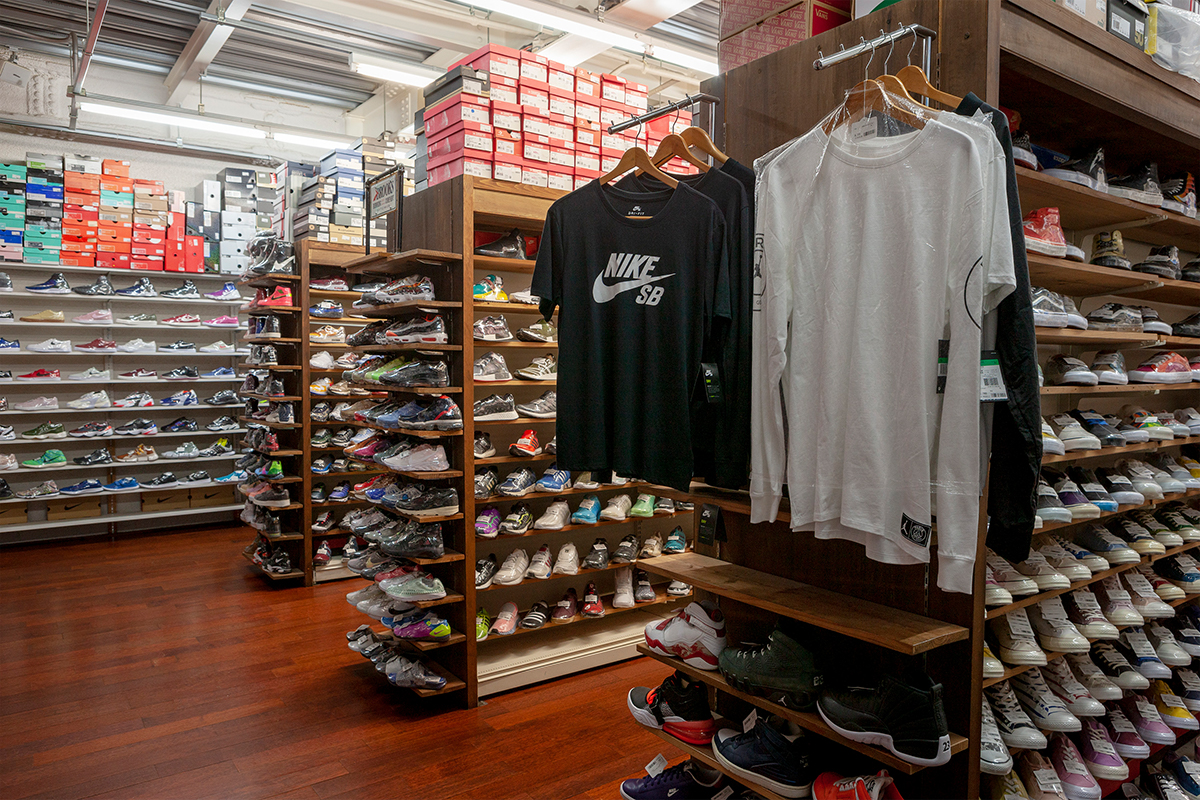TALKING ABOUT ARCHIVES Vol.04
Archive Stories by Katsushige Kamamoto, The Owner of SKIT (Part 2 of 2)
In Part 1, Kamamoto, the owner of SKIT, talked to us about the importance of understanding culture and what we can gain from it. This time in Part 2, Kamamoto goes on to explain how he feels about the archive and secondary market. Through Kamamoto’s words are interesting findings about the challenges faced today in the market, and the potential outcomes.
- The Enchantment of Understanding Archives

---Last time you told us about Air Jordan 1. Is NIKE the topmost brand that is leading the market right now?
“Yes, it has been that way ever since I started selling sneakers. I don’t think there’s been a case where adidas exceeded them. I’m sure there’s been times when adidas has had success in climbing up the ladder, and probably had success in selling better than the Jordan brand, but I don’t think NIKE has ever positioned below them. It’s because of the incomparable difference between the number of releases and original design ideas NIKE comes up with. adidas tried to appeal Stan Smith by saying that they’re going to stop making them for 5 years, but Air Force never had to stop its production, while continuing to release more color variations even if it wasn’t selling well. Also, NIKE being a sports company has always been exceptional at acquiring star athletes.”
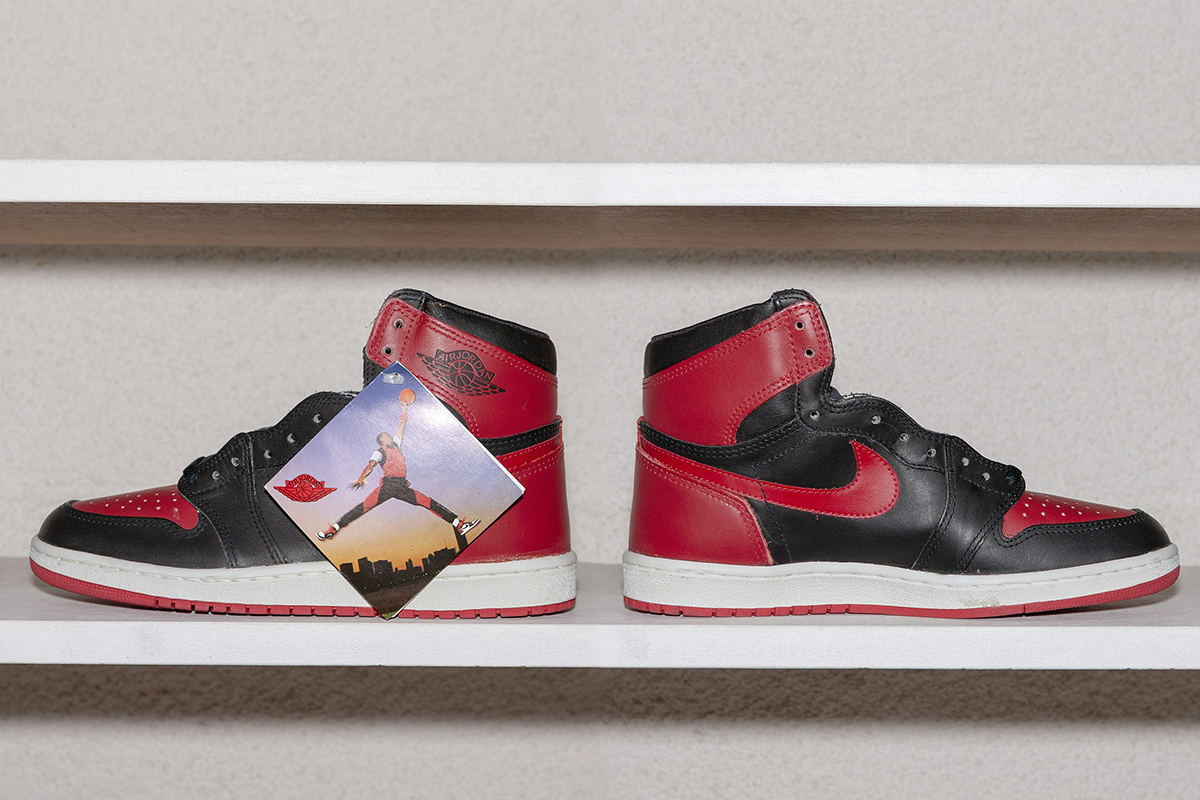
“Until recently, you could’ve bought the original Air Jordan 1 that I previously mentioned for about 150,000 yen, but now the value has gone up to cost between 300,000 to 400,000 yen. They’re quite rare, but there are a lot of examples like this one where you wish you got them earlier (laughs). Collectors always existed, and they usually just buy them and never wear them, so there’s a lot of deadstock hanging around, but very few in used condition. That’s why there are so many Air Jordan 1’s in the market in excellent condition.”
---It feels like it would lose its value if they’re abundantly available?
“That’s what everyone says, and you’re right, it can negatively affect its value sometime. However, it’s the consumers that are deciding the value, not the brand. The brand is trying to continue selling its products. So for them, it’s rather normal for them to continue releasing vast amounts of the same product, and couldn’t care less if an item has to go on clearance. For the brand, the value of an item is something that’s outside of their realm.”

---In your opinion, what other valuable sneaker models come to your mind that’s not by NIKE?
“The slip-on VANS that collaborated with RAF SIMONS, COMME des GARÇONS, Colette in 2004. This was the same year when COMME des GARÇONS brought the French boutique Colette to Japan for the first time. A popup store opened, and Raf Simons designed this exclusive model, which only 100 pairs were made.”
---There must have been a crazy line to get them?
“I don’t think so. I can’t imagine there being a big line to buy VANS back in those days. This was also when information was slower to get to people. It was only after much later when the value of this model skyrocketed when people started to find out that it was so limited in availability. Nowadays there’s social media that people use to spread rumors about a rarity of something, and that automatically adds value to an item. It’s not the brand but the consumers and this information saturated society that decides something is rare without knowing if it really is. Because word of mouth comes first before the actual facts, these true rare gems aren’t noticed right away, but would rapidly increase its value years later.”

---What do you think will happen to the archive market?
“Today, Japanese people are buying less at premium prices than how people used to in the past. It seems like it’s more favorable now to buy things at its original price. From my own experience as a seller, it feels like someone wanting to purchase a pair of sneakers for a premium price of 150,000 yen doesn’t mean all that much. Items getting premium pricing is not going to make a big impact on the market. It’s sort of a trend that’s invisible. We notice that we don’t really see people wearing premium priced shoes, even though we know that they’re being sold somewhere. But on the other hand, we still see people wearing adidas YEEZY when it’s being said that it’s an outdated trend, which makes me think, perhaps it’s still pretty hip and trendy (laughs)?”
---So it’s better described as a market that remains flat, rather than one that sees growth?
“Yes. What we see on the surface are topics about how much more value an item is getting, but things like that are still very few and of limited quantity. I feel like Air Jordan 1 OG is still kind of an exception because it gets sold by at least two times its original price immediately after they’re released. So there’s a few exceptions. But I wonder what people are doing with the shoes they bought for a couple grand at the time (laughs). You could assume that those items may increase its value over time, but unlike watches and cars, the value could decrease as well, since shoes can get wear and tear.”
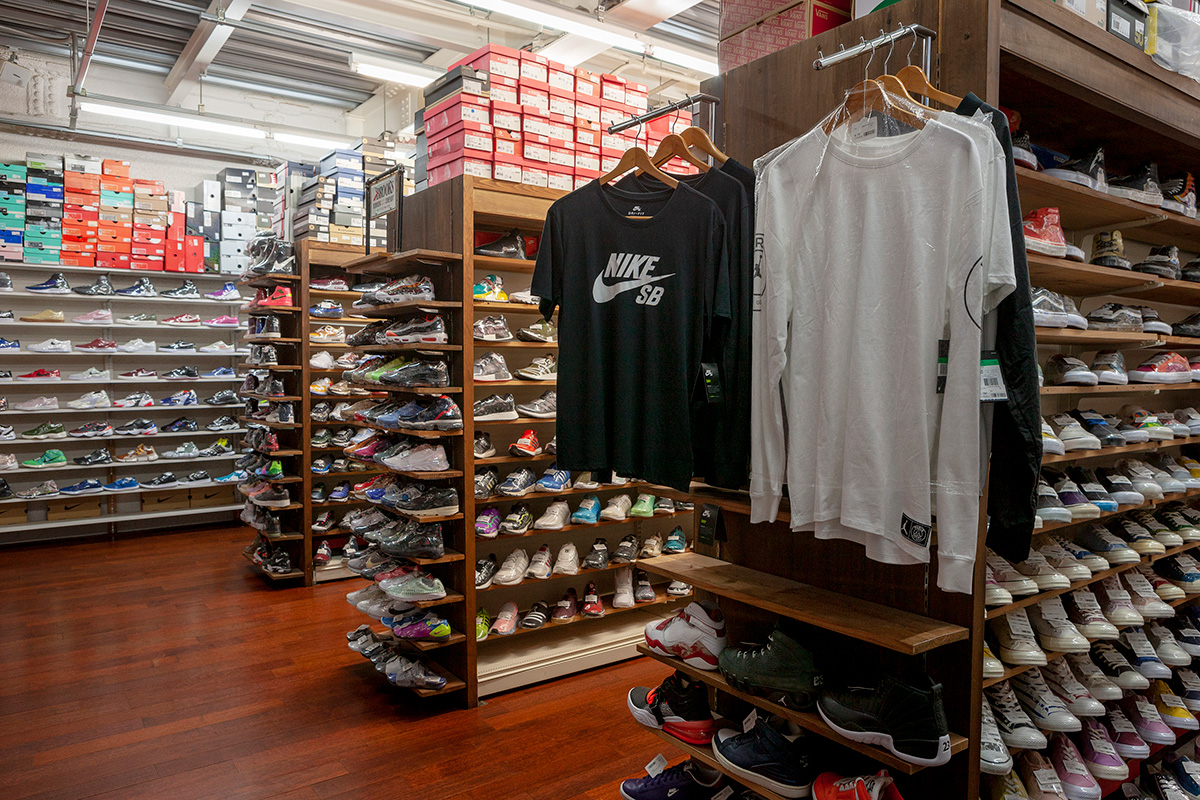
---What is compelling about the secondary market?
“The freedom. However, I think today there’s two meanings to it. What I originally had in mind was making a business out of shoes that don’t fit someone’s closet anymore, or won’t be worn again. I wanted to buy these shoes from those people trying to get rid of them, and try reselling them. It’s nice to go to official retailers to buy new releases and models from ongoing collections. But you would start to not see those items on the shelves of official retailers 2 or 3 years from now. Even if it’s an item from 2 years ago, for someone who sees it for the first time, that’s still a new item for them, right? So the secondary market is compelling because there are great finds that were actually released in the past, and my job is to carry on this appeal.”
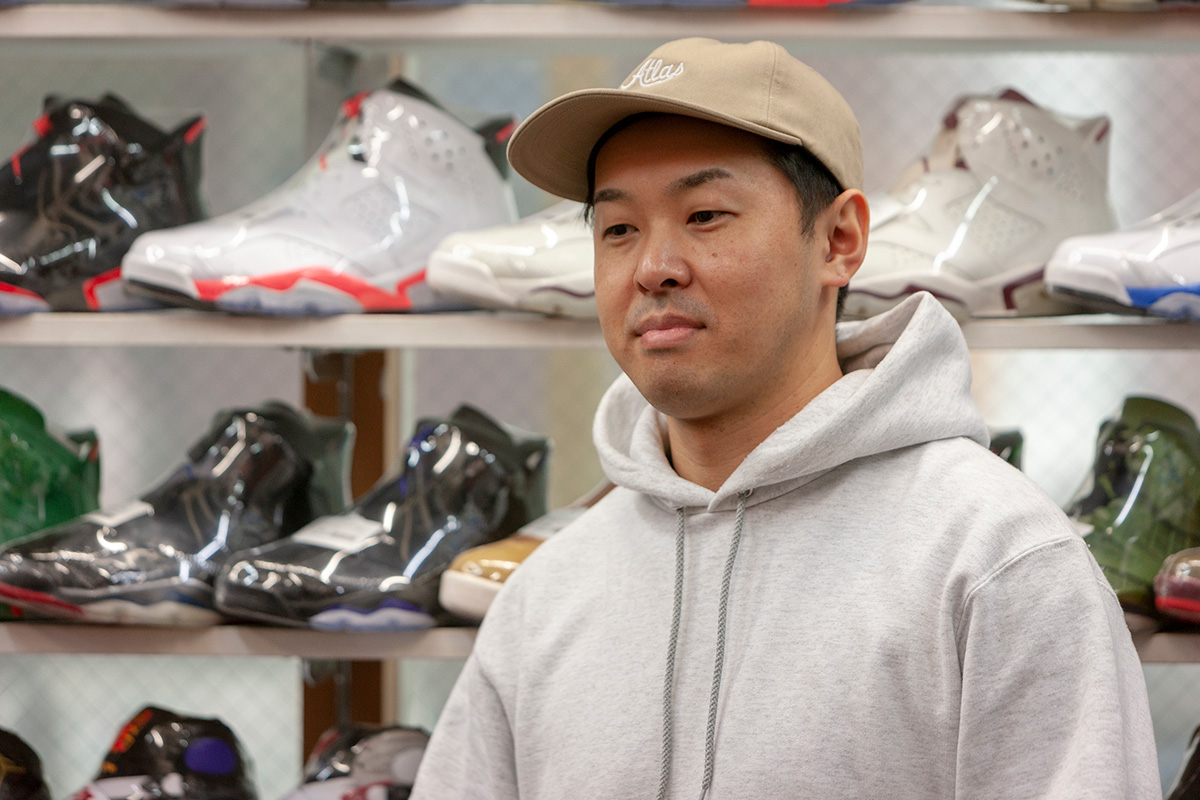
---Japan seems to have a strong secondhand market culture.
“You’re right, Japan was the first to have such kind of culture. It wasn’t something that was observed overseas. There’s a store called Flight Club in the US for sneakers consignment sale, and one time the staff from Flight Club came to my store to ask me about how we make our business work. And then a while later, I saw on TV about how there’s a new trend in New York where a store does consignment sale for sneakers. And they were showing the inside of the store and at first I thought they were showing my store. Everything looked exactly like how it’s done at my store, like how we shrink wrap everything, and I remember how surprised I was to later discover that this was Flight Club. They quickly became famous, and the guys that ran the Flight Club business started another sneaker consignment business, which is Stadium Goods. Now you can find consignment stores everywhere in the US. They probably imported what our store had been doing, thinking that it would be successful in the US too. And they were very successful from it. What started in Japan became a huge business opportunity in the US, and today the US secondary market is in a more central position than Japan is.”
---In a market like that, which sneakers do you think will increase in value soon?
“I’m predicting that the Dunk series by NIKE SB will come under the spotlight. I’m sure they’ll go on fire, including the ones that have been released in the past.”
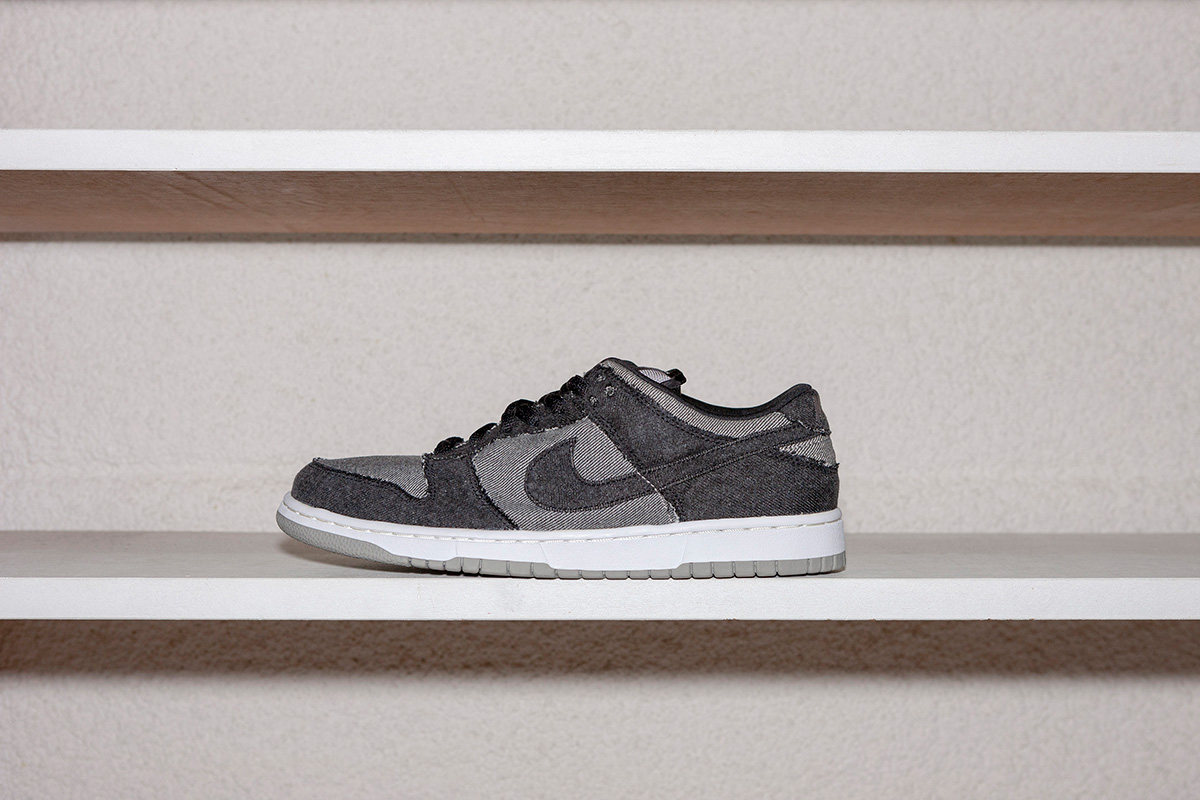
“In recent years, the Dunk market had been dormant. But I think it was about 2 years ago, when the SB team changed the way they promote the products. We suddenly started to notice Travis Scott wearing old Dunks, and foreign icons were exaggeratingly wearing them so that they’d be captured in photos. We’re starting to see signs of a new trend as celebrities started to wear Dunks out of the blue. We don’t really see that this trend has arrived in Japan yet though.”
“It’s super exciting for people like us when something that had been dead wood comes back to life again, because we know that we had been a part of the movement behind the scenes. You won’t be able to find DUNK SB released in the past in any of the official NIKE distributors, so the only way you can get them is by finding them through the secondary market. It’ll be fun if more people will join in this excitement.”
Kamamoto believes that if “secondary market” is another term to describe the resale culture, then we’re now living in the era of dynamic engagement of reselling. We learned from him what the secondary market really is. We can start to see the ambition of the secondary market that is behind the ongoing trend of archival fashion.

SKIT Kichijoji
Business hours: 11:00~20:00
Address: Tokyo, Musashino, Kichijoji Minamicho, 1 Chome−18−1
D-ASSET Kichijoji 1F
Phone: 0422-47-6671
https://www.k-skit.com/
Katsushige Kamamoto
Born in 1978 in Aomori Prefecture.
Owner of sneaker shop “SKIT”. Currently has four locations in Japan.
Carrying rare items at reasonable prices,
SKIT is being noticed by sneakerheads from all over the world.
Text_ HAYATO HOSOYA



